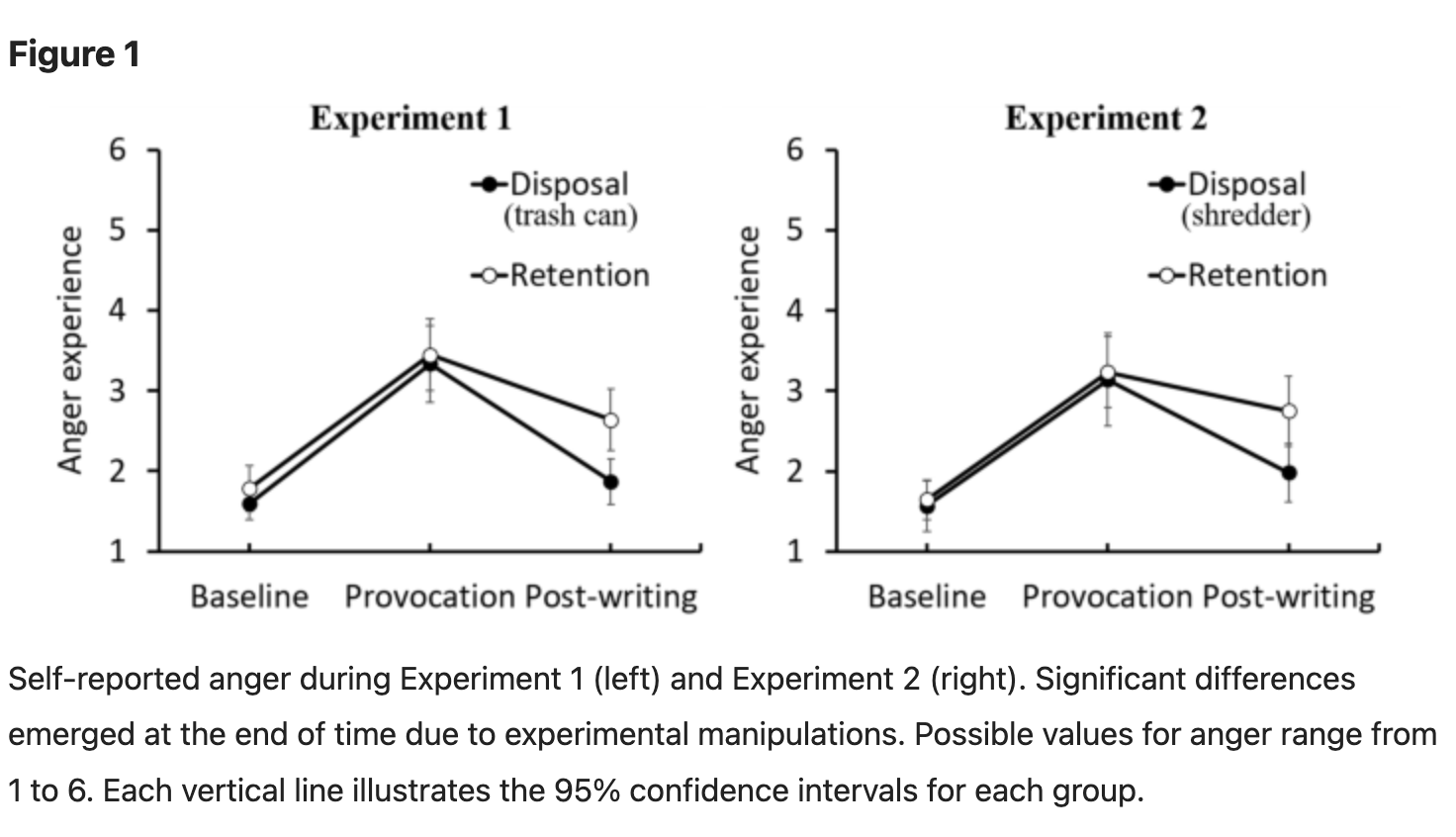Subscribe
Imagine, for a moment, you are mad about something. When I am mad, I often use such tactics as “whine to a loved one” or “send tweets that I regret.” What do you do? Do you write down why you are mad on a piece of paper? Do you ball up the paper and throw the paper into the trash? A new scientific paper published in one of the leading peer-reviewed journals in the entire world has found that if you are not writing your feelings onto a piece of paper, crumpling the paper, and throwing the paper into the trash, you are missing out on an effective anger management technique.
The study, by Yuta Kanaya and Nob Kawa of Nagoya University in Japan, is called “Anger is eliminated with the disposal of a paper written because of provocation.” It was published in Scientific Reports, which is the fifth most-cited journal in the world and is part of the Nature family of journals. The study, which is incredible and which you must read, begins with this passage: “The need to control anger has been of importance for a long time in human societies, as inferred by a philosopher in Imperium Romanum who had already explored how to cease being angry. However, it can still be challenging to suppress anger effectively,” which, true. It adds that “failure to reduce anger can lead an individual to think about a provocative event repeatedly.”

The researchers wrote that they “developed a new anger reduction strategy” of destroying an “anger-written paper.” In the study, participants at a university were asked to write an essay about a social problem, and then, to make them mad, were given bad scores on the essay and the specific feedback “I cannot believe an educated person would think like this. I hope this person learns something while at the university.”
After receiving this negative feedback, the participants were then asked to write about how the feedback made them feel. “The participants in the disposal group rolled up the paper into a crumpled ball, stood up, threw the paper into the trash can held by the experimenter, and sat back in the chair.” A control group put their feelings into a clear folder and left them on the desk.
The researchers found what they described as a significant reduction in participants’ “anger experience” when they disposed of the feelings paper. To test if the disposal method mattered, they then did the same experiment but had one group put their feelings through a shredder, and a control group put the paper into a clear cube. They saw a similar reduction in “anger experience,” but the control group did not.
“Our interpretation is that the act of throwing the paper with ruminated anger into the trash can produces a feeling similar to the psychological existence (anger) being discarded, leading to anger elimination, since the psychological entity (anger) was disposed along with the physical object (anger-written paper),” the researchers wrote.
Kawa, one of the authors of the paper, told me in an email that they believe other mechanisms of destroying the feelings would also work: “Even burning or tearing paper works, I believe. I don’t think it even has to be paper. For example, I suppose it could be emptying a word file by throwing it in the [digital] trash.”
Perhaps none of this is terribly surprising to you. And yet, studies that seem very obvious but are tested anyway and published in major journals is one of my favorite genres of scientific paper. Kawa attempts to propose a theory for why this might work, which is called “backward magical contagion” which Kawa said “is the belief that actions taken on an object (e.g. hair) associated with an individual can affect the individuals themselves. Manipulating an object associated with a person is thought to impact the individuals themselves.”
The paper does not acknowledge or guess as to whether this technique would be effective for truly traumatic or major reasons for being angry. I would imagine that being deeply wronged could not be solved by simply transposing yourself onto a piece of paper.
Kawa also told me why they did the experiment in the first place: “We see objects with our feelings and thoughts. When an object overlaid with feelings is broken, we sometimes feel as if our feelings are also broken. If this happens, I thought that by throwing away the paper with the layers of anger on it, I could throw away the feelings as well.”


